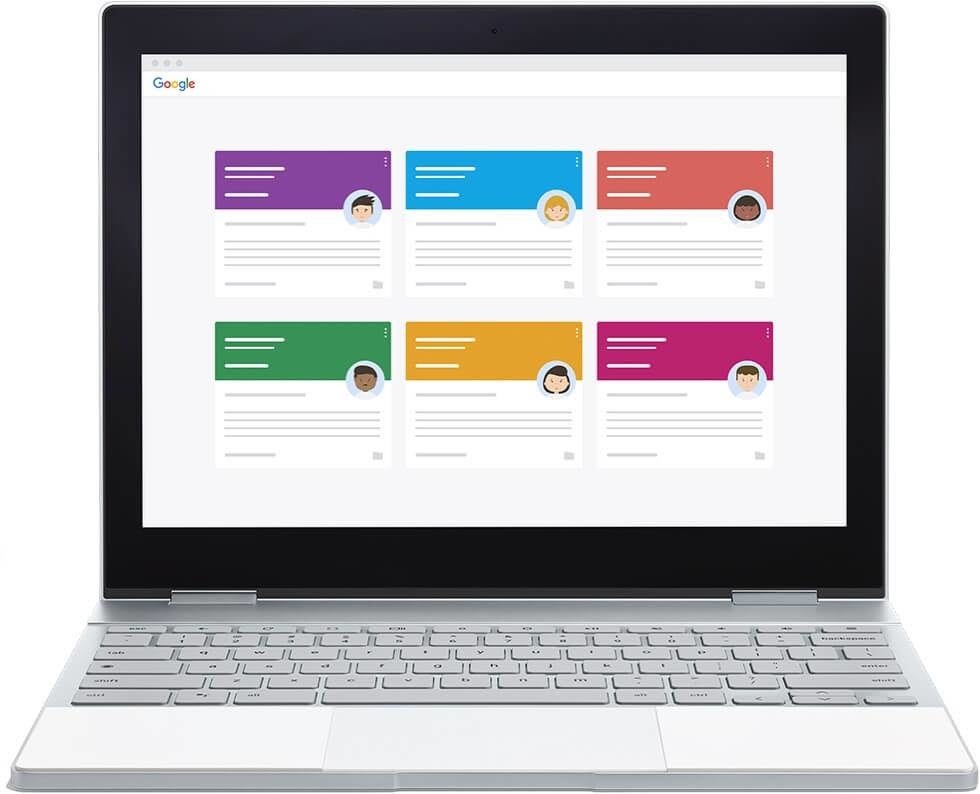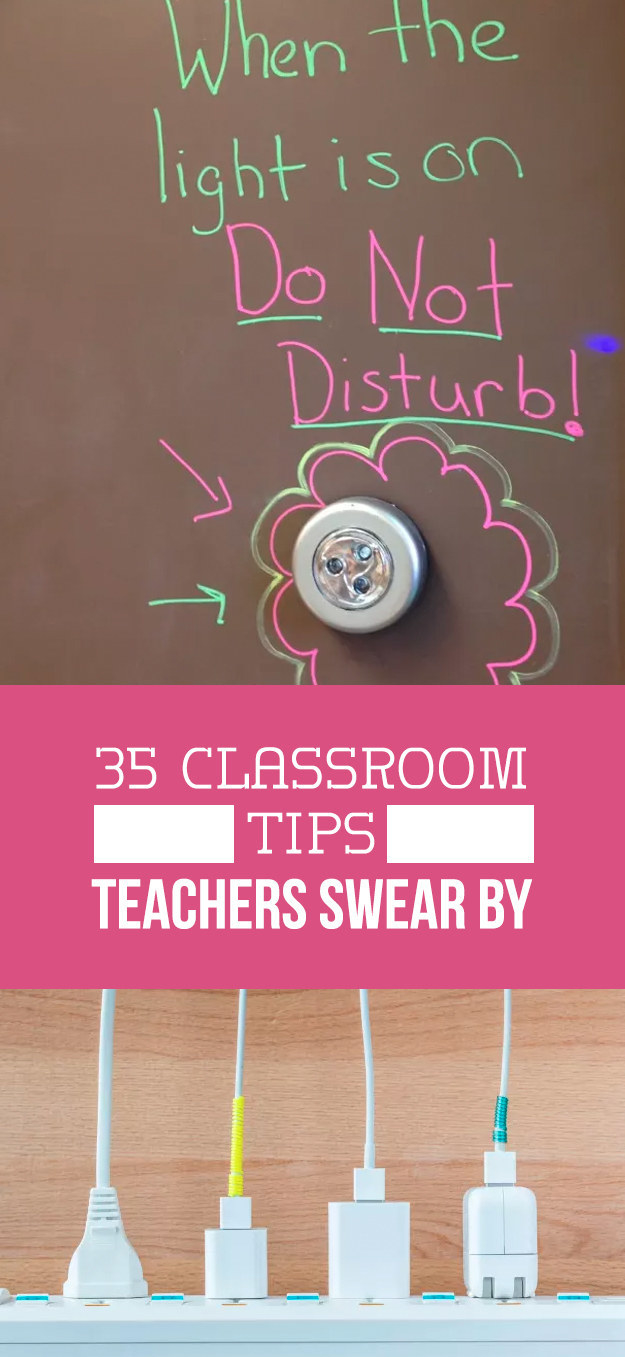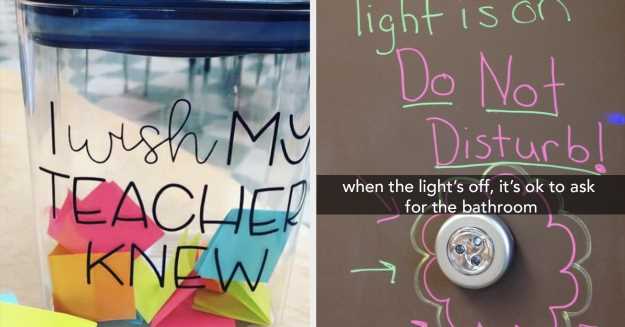We hope you love the products we recommend! Just so you know, BuzzFeed may collect a share of sales or other compensation from the links on this page. Oh, and FYI — prices are accurate and items in stock as of time of publication.
We asked teachers in the BuzzFeed Community for their best tips and tricks of the trade, and here are their responses!

Always remember that respect is a two way street. (I had at least two students release their own R&B and rap music last year. It’s more legit than it sounds.) And nobody calls me by my first name! —rsmith8235
3.Wear your preferred pronouns on your name tag. Whatever your gender, making a point of stating your preferred pronouns can make it safer and more comfortable for others to share theirs.

After teaching for six years (I know it’s not that long…feels like it) the one thing that has remained is to always come along side students where they are at. Then and only then will they grow in their learning and will you be able to challenge them to move beyond. Oh and teenagers can spot BS from a mile away. Just be yourself 🙂
—michellee41c913d37
Come alongside where they are physically as well. Standing and lecturing from a podium does not build rapport. Walk among the kids, see what they’re doing, speak to individuals, get to know them. They’re actually really fun and interesting!
—huh448
5.Don’t hold a grudge against a student for something they did the day before, and never take anything personally.

Treat every day like a new day. —rakbarnes
Kid bit me? They were mad and couldn’t figure out how to tell me. The kid probably won’t even remember doing it the next day, so holding onto it isn’t going to do anyone any good. Correct/teach in the moment and then let it go.
—funnyvalentine
6.Be consistent with your rules, especially at the beginning of the year.

I use Fortnite and Minecraft screenshots to teach the concept of first and third person perspective, and boy do they perk up and pay attention!
—lisah43bcb1d6e
8.On the first day of class, assign an “I wish my teacher knew…” in-class essay, or set up a year-round jar with some sticky notes.

I keep a stash of sealed envelopes addressed to other teachers with a note inside that says “please send my student back to me, and thank you for your assistance.” When a kid is getting heated or a little out of control, I send them to take a note for me. It gets them out of the situation for a minute, and I can meet them in the hall to talk things over without pride and peer pressure when they get back.
—endersarcade
10.Give students who like to talk out of turn small jobs or tasks they can do for you.

All they want is your attention and if you give them an errand to run they will feel that attention they crave.
—rakbarnes
11.Structure your sentences as expectations, instead of requests.

My sister changed the way she structures sentences. Instead of saying “Jimmy please pass your book up,” she’ll say, “Jimmy pass your book up, thank you.”
—laurae486e9cb98
12.But don’t be afraid to let yourself laugh!

The most important thing I do is laugh. I teach high school and students are funny as heck and they love it when you laugh with them! —corrrndog
Make room for laughter in your class! Teachers are really encouraged to come down hard and be tough all year, but nothing helped my classroom management more than having fun and laughing in class. I will never be the hardass, so I just leaned into being the fun one! Did that mean kids would sometimes try to get away with little things? Yeah. But I could call them on it, and since my kids really LIKED being with me, they didn’t argue at all. I would say “hey, just because I’m a fun teacher doesn’t mean you can take advantage of me,” they’d apologize, and life would move on.
—madeleined400dd298d
13.And if you don’t know something, or realize you made a mistake, there’s no harm or shame in admitting it.

Kids are smart, they understand that you’re human.
—schulzemary214
In fact, your honesty might help them be more honest and willing to admit mistakes both now and years down the line.
14.Give students a dedicated place to park their phones during class, so they aren’t even the least bit tempted to get distracted (by that, anyway).

I teach high school where administration frowns upon us actually taking the students’ cell phones away from them. I combat this by placing the phone in a small brown paper bag (like what kids bring their lunch in), staple it shut, and give it back to them. The kids are usually pretty cool about it, and it makes the phone unusable, but they still have it in their possession. I’ve never had anyone take it out of the bag, but they are all aware that doing that is an automatic referral to the dean.
—adidaisy0122
TBH I might start doing this to my own phone after like, 8 p.m. You should be able to find paper bags for cheap at the grocery store, but if you’re doing an Amazon order anyway (or just go through lots of paper bags), they’re $4.99 for a pack of 40.
16.Or use positive reinforcement — in this case, extra credit — to help your students learn to resist the need to check their phones.

We use something we call the “Phone Box Fist Bump” in our 12th grade economics classes to teach concepts like trade-offs and opportunity costs. Put a cellphone-sized rectangle in the corner of every desk and tell students that for every day of class that they leave their phone in the box face down without touching it, they get a stamp on a handout with a picture of a closed fist. When they get all the fingers on the fist stamped, they can use it as five bonus points on a test, and get a new sheet to fill in. “Class, what happens when you decide to spend time in your phone in class when you should be working?” “We give up extra credit points!” You’d be surprised to see how excited 17 and 18 year-old kids get about a stamp on a piece of paper!
—mattw53
17.Send home at least as many positive emails/calls/texts as you do negative ones.

PARENT CONTACT! You’ll be amazed at how good you feel when you tell a parent how their child is succeeding and growing.
—rakbarnes
18.You can even use happy phone calls home (or to a coach or other adult whose opinion they deeply value) as a positive reinforcement tool.

One of the best things I’ve done is offer positive phone calls home. I tell my kids if they behave all week with little to no disruptions/disrespectful behavior, I’ll call their mom, dad, grandma, basketball coach, whoever, and let them know they’ve been a great student that week. I started doing this in the middle of the year because one of my classes was just wild. But even though they try to act tough and like they don’t care about their parents or school, most of them really wanted to make their parents/grandparents/coaches proud.
—belenl2
19.And when you do have to call parents about negative behavior issues, help them feel like you’re all on the same team.

I always say, “I know he/she doesn’t behave like this at home. Do you have any ideas about what I can try?” Say it to parents even if you know that student acts out at home. This way parents feel like we are on the same team and will be more motivated to correct their student. It works every single time.
—baileyj123456789
20.Set up a student center that kids can quietly go to whenever they need something (tissues, pencils, erasers, a pencil sharpener, a hole punch, and so on) so they don’t have to interrupt class to ask you for something. And include a “While You Were Out” bin to manage handouts and assignments when students are absent.

GoNoodle was my saving grace! If you teach elementary school, you know that your students aren’t meant to sit still for extended periods of time. This free online tool has tons of videos that get the kids up and moving to reset their brains and bodies for the next lesson. (Also, I would sneak in extra recess whenever I could!)
—annalisab44c7d197c
Check it out at GoNoodle.
29.To get students attention and calm them down when everyone’s talking, try a countdown with a twist.

I teach fourth grade math. I used to hold up five fingers and require the students to hold up five fingers, then follow as I counted down to zero as a signal to get quiet. This was mostly effective but not with all students. So now, I count down using different arrangements of five and four (ex: holding up three fingers on one hand and two on the other) so by the time I got to three every kid was paying attention or else they wouldn’t know which pattern of five and four I’d use. And if a kiddo wasn’t with me, it was easy to spot because they wouldn’t have the same fingers up as I did.
—patrickh46749c35c
30.You could also try randomly writing a few of the students names down on the board.

It makes everyone stop talking because they’re trying to figure out why I’m writing names and what it means… Are they in trouble? Am I making groups? Is this a good thing? Then I have everyone’s attention and the class is quiet. Works every time.
—juliad4221f6fed
31.Or enlist the help of a wireless doorbell to help everyone refocus on you.

It will de-escalate the situation and help avoid a big confrontation.
—meghana4c762e4ee
33.Create a mini-economy and your classroom will run itself! Kids will be genuinely motivated to earn class dollars to buy prizes from the class store.

This totally eliminates, “but I turned that in, Miss!” — now you have excellent proof! —rsmith8235
Save those parent-signed F papers, demerits, and notes from home. I save tardy slips and my discipline tracking sheets each week. I try to email instead of calling for parent contact, good or bad, and take notes on the times I have had to call. I don’t have to refer to them much, but they’re not hard to file, and the few times I’ve needed them, they have saved my ass, both with parents and administration.
—huh448
36.Consider Google Classroom if all your students have laptops, which lets you do things like create a classroom calendar and manage assignments.

It’s is the best thing ever if your school district is on board. Too sick to teach but too well to stay home? Post a read/write assignment on Google Classroom 10 minutes before first period! Not to mention using it faithfully will eliminate the need to save every single one of students graded papers if you use it all the time. (11th and 12th grade on-level science).
—rsmith8235
Google Classroom is completely free for schools; here’s more info.
For even more tips (specifically classroom organizing and decorating tips and ideas), check out 35 Classroom Tips And Tricks That Teachers Actually Swear By.

Want to be featured in future BuzzFeed posts like this one? Follow the BuzzFeed Community on Facebook and Twitter!
Note: some responses have been lightly edited for length or clarity.
Shopping for something specific? Check out BuzzFeed Reviews to find the best things for every budget!

Source: Read Full Article
